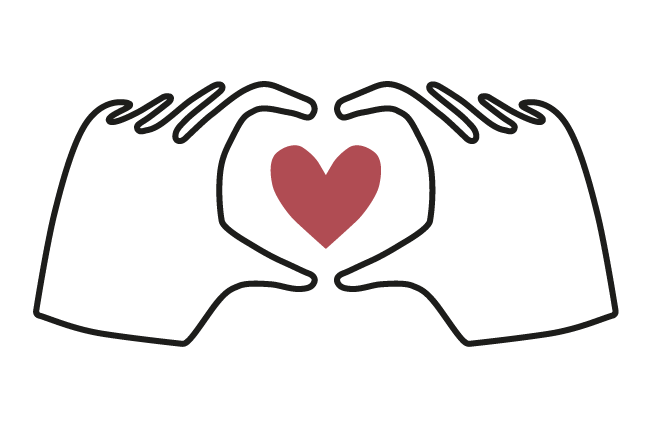Evaluating Hug in a Mug

As a final step in our project, the team completed an evaluation of the ‘Hug in a Mug’ policy.
Does Hug in a Mug respond to the needs we identifed?
We went back to Gill’s identified needs and asked how the policy responded to them:

Anticipated Service Design outcomes
At the start of this project the Co-Design Crew described the behaviours and experiences that people interpreted as loving and being the kind of relationship they were looking for. We identified which descriptions relate to our service design proposal and then explained how the ‘Hug in a Mug’ service design supports and enables these behaviours.
For the workforce they include:

- We can help
- We believe in you (and mean it)
- We understand the bigger picture and how it relates to behaviours
- We’ll be there when care leavers need us through everything
- We’ll think the best of care leavers- help them improve

- I love you
- I accept you as you are
- What’s your opinion (asking)
- When you do… it makes me feel…
- I am here for you if you want to talk

- Helping you to be heard by listening, enquiring
- Breaking boundaries (having permission to push)
- Not giving up and being there for life
- Celebrating and congratulating
- Practical and emotional help -allowing us to make mistakes
Our service design concept relates to behaviours described in our vision because our service design idea envisions to:
- Provide a nurturing work environment and culture that offers nurturing experiences for staff and enables nurturing work practices for workers.
- As a consequence, workers will feel more committed to delivering positive outcomes in their roles.
- If the workforce are nurtured, young people who use our services will have more confidence in the services they use.
With ‘Hug in a Mug’ in place at a policy level, the design of specific touchpoints to embed a nurturing culture will be encouraged. As we have specified in our policy document, this will take an evolving course and should be co-designed with workers according to their specific nurture needs.
Having access to the Nurture Champion programme, informal therapeutic supports and being a single point of contact for young people all faciliate the Relationships First vision behaviours.
The policy also aims to help workers connect with young people in a:
- Light/hopeful way and be spontaneous
- To unconditionally accept where that person is at this moment and how they’re feeling
- To be non judgemental in their conversation and take an active interest in what they’re currently experiencing
- To communicate empathy to that person
Reviewing the Corporate Parenting Service Design Principles
Service Design Principles are a set of considerations that help people make decisions while they are designing services and evaluate what they’ve designed. These Seven Corporate Parenting Service Design Principles were created after synthesising the Co-Design Crews research findings.


1. Design for Reciprocity
Relationships are a two-way street. Does our service design invite and enable people to connect as humans and care for one another?
The policy supports the relationships between colleagues and is workforce focused. All of the proposed ideas are to embed a nurturing culture, which will in turn lead to nurtured relationships.

2. Design for parental approaches and roles
We don’t need to go the extra mile, they are one of our own. Does our service design enable Corporate Parents to be educated about and explore their parental approaches?
While our policy is workforce focused we believe that nurtured staff lead to nurtured young people.

3. Design for Love
Love is a set of behaviours which are felt. Does our service design enable Corporate Parents and care leavers to understand what love looks like in their relationship and support this in practice?
Nurture is central to and promotes loving and compassionate relationships.

4. Design with sensitivity to time and timing
Quality and meaning trumps quantity without feeling. Does our service design recognise that life doesn’t happen between 9-5 and enable people to connect in a way that is meaningful to them?
Our policy encourages more flexible working arrangements and person centred approaches.

5. Design for where people are at and going
We are always learning in relationships. Is our service design sensitive to the different starting points people are at and who they are becoming, not where we presume or expect them to be because of their age, gender or role?
There’s a curiosity factor in nurture and there’s no ceiling. We all need to be nurtured at the point of engagement and our levels of need for nurture fluctuates – the service needs to respond to that.

6. Design for saftey and trust
Safety is an illusion never to trust. Does our service design offer opportunities for people to challenge perceptions of organisational rules and unhelpful thinking patterns? To develop trust and negotiate the natural ebb and flow between people’s boundaries in a relationship?
Having a single point of contact allows for more feelings of safety and comfort in a relationship which is an environment for developing trust.

7. Design to enable vulnerability and connection
Vulnerability is having the courage to show up and be seen when you have no control over the outcome. Vulnerability is a risk we have to take if we want to experience connection. Does our service design enable people to be themselves and enjoy connecting?
If you’re being nurtured then you’re being given the permission to say how you feel without being judged, the policy demonstrates that the nurture champion will validate/accept the place that you come from at that moment.
Is Hug in a Mug Transformational Change?
We discussed the type of transformation we expected our concept to realise by using the Three Horizon Model. We identified the second horizon as the goal – exploring and discovering new ways of moving forward.
